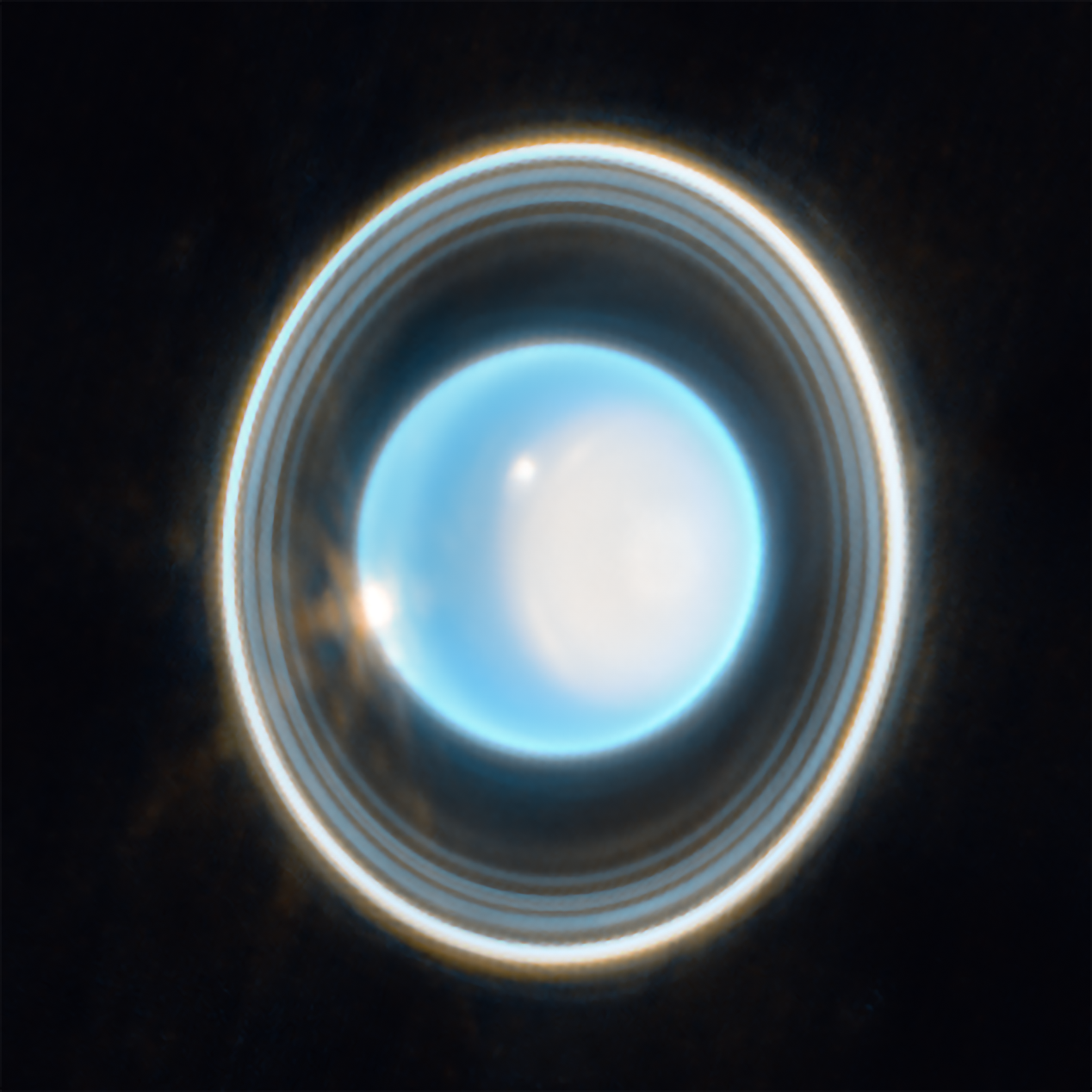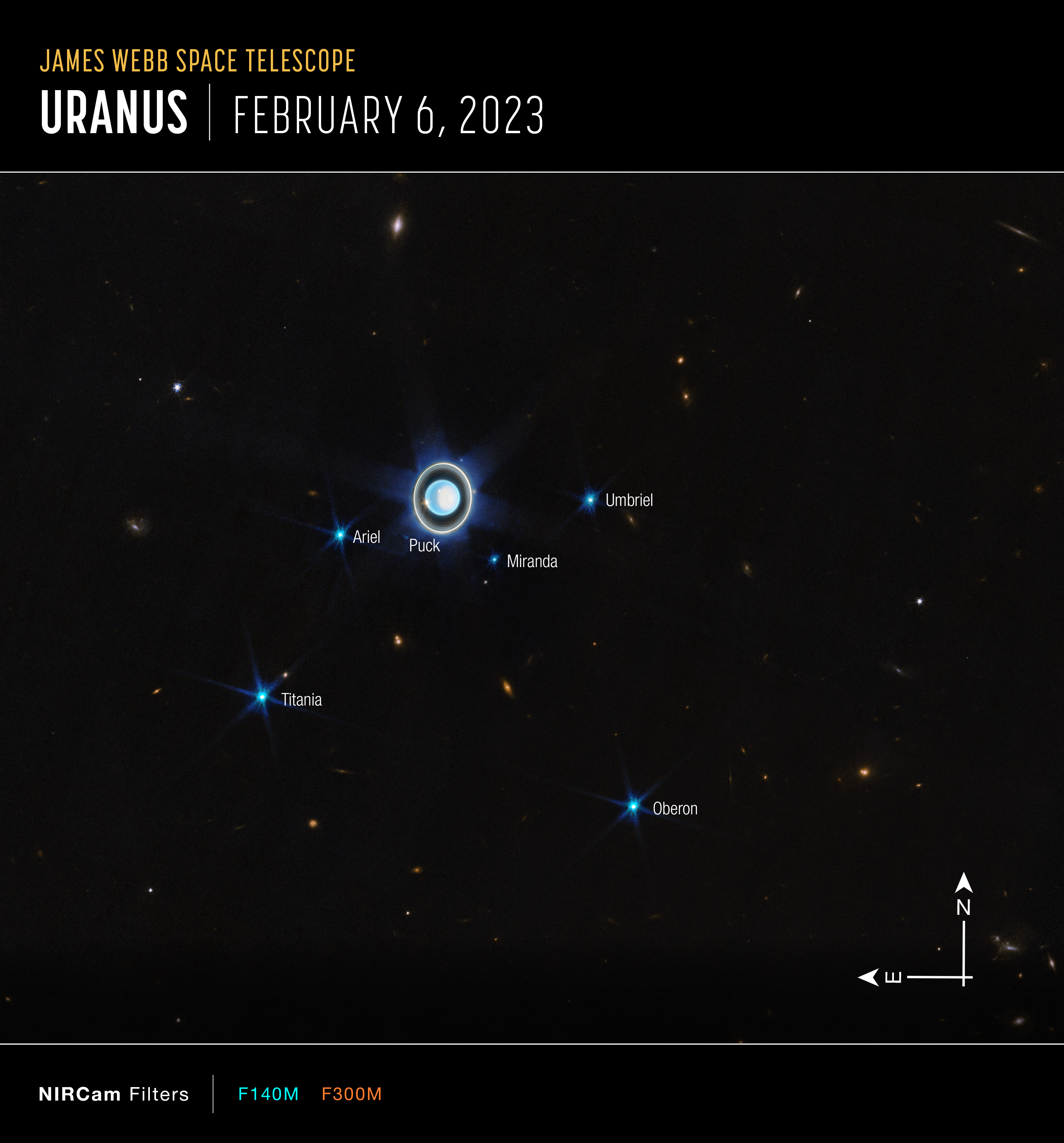1 min read
Uranus (NIRCam Image)

This zoomed-in image of Uranus, captured by Webb’s Near-Infrared Camera (NIRCam) Feb. 6, 2023, reveals stunning views of the planet’s rings. The planet displays a blue hue in this representative-color image, made by combining data from two filters (F140M, F300M) at 1.4 and 3.0 microns, which are shown here as blue and orange, respectively.
On the right side of the planet there’s an area of brightening at the pole facing the Sun, known as a polar cap. This polar cap is unique to Uranus because it is the only planet in the solar system tilted on its side, which causes its extreme seasons. A new aspect of the polar cap revealed by Webb is a subtle brightening near the Uranian north pole.
At the edge of the polar cap lies a bright cloud as well as a few fainter extended features just northward of the cap’s edge, and a second very bright cloud is seen at the planet’s left limb. Such clouds are typical for Uranus in infrared wavelengths, and likely are connected to storm activity.
About the Object
- DistanceDistanceThe physical distance from Earth to the astronomical object. Distances within our solar system are usually measured in Astronomical Units (AU). Distances between stars are usually measured in light-years. Interstellar distances can also be measured in parsecs.On February 6, 2023 Uranus was 19.67 AU from Earth (1.83 billion miles)
About the Data
- Data DescriptionData DescriptionProposal: A description of the observations, their scientific justification, and the links to the data available in the science archive.
Science Team: The astronomers who planned the observations and analyzed the data. "PI" refers to the Principal Investigator.This image was created from JWST data from proposal: 2739 (K. Pontoppidan)
- InstrumentInstrumentThe science instrument used to produce the data.NIRCam
- Exposure DatesExposure DatesThe date(s) that the telescope made its observations and the total exposure time.February 6, 2023
- FiltersFiltersThe camera filters that were used in the science observations.F140M, F300M
- Object NameObject NameA name or catalog number that astronomers use to identify an astronomical object.Uranus
- Object DescriptionObject DescriptionThe type of astronomical object.Planet
- Release DateApril 6, 2023
- Science ReleaseNASA’s Webb Scores Another Ringed World with New Image of Uranus
- CreditNASA, ESA, CSA, STScI; Image Processing: Joseph DePasquale (STScI)
Downloads

These images are a composite of separate exposures acquired by the James Webb Space Telescope using the NIRCam instrument. Two filters were used to sample medium wavelength ranges. The color results from assigning different hues (colors) to each monochromatic (grayscale) image associated with an individual filter. In this case, the assigned colors are: Cyan: F140M, Orange: F300M

Related Images & Videos

Uranus (NIRCam Compass Image)
This wider view of the Uranian system with Webb’s NIRCam instrument features the planet Uranus as well as six of its 27 known moons (most of which are too small and faint to be seen in this short exposure). A handful of background objects, including many galaxies, are also seen....
Share
Details
Laura Betz
NASA’s Goddard Space Flight Center
Greenbelt, Maryland
laura.e.betz@nasa.gov
NASA, ESA, CSA, STScI
Joseph DePasquale (STScI)






























